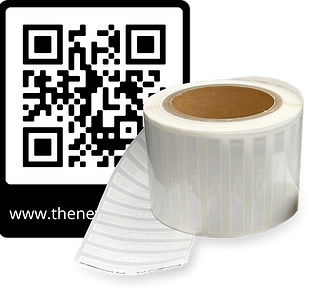
Request a quote or give us a call 317-625-9595
How RFID Labels Improve
Recycling Processes
Tracking & Management: Not guessing. Data-driven recovery.
Smart Packaging
Smart packaging isn’t just about brand protection or inventory control—RFID labels can also make recycling faster, more accurate, and more transparent. By pairing item-level tags with standards-based barcodes (GS1) and cloud data, brands, retailers, and recyclers can see where materials go, prove what’s actually recycled, and design closed-loop systems that reduce waste.
Tracking & Management: Not guessing.
Data-driven recovery.
RFID brings real-time tracking to materials as they move through the recovery chain—collection, sorting, and reprocessing. Tagged containers and materials create a digital audit trail that helps operators:
-
Automate identification and sorting at transfer stations and MRFs, reducing manual errors and increasing throughput. (GS1 US Documents)
-
Measure participation and diversion (e.g., by route, facility, or program) so municipalities and haulers can improve operations. Programs using RFID-enabled carts and readers have documented large jumps in recorded recycling tonnage and participation. (WIRED)
-
Run “pay-as-you-throw” or incentive programs more fairly by linking carts to households via RFID, improving accountability and reducing residual waste. (MDPI)
Industry studies and pilots show RFID-equipped bins and lines help move from manual sampling to continuous, granular data—which is essential for efficient route planning, container right-sizing, and targeted education. (GS1 US Documents, MDPI)


Transparency: Proving what’s recycled (and where)
One of the biggest gaps in sustainability reporting is the lack of verifiable, end-to-end material flow data. RFID closes that gap by linking a tag (and optional GS1 Digital Link/QR) to item or batch records in a database:
-
Track quantities and contamination trends by stream, facility, or program to identify bottlenecks and improve yield. (MDPI)
-
Enable product passports in line with emerging GS1 guidance, improving traceability for textiles, packaging, and more across the circular lifecycle. (GS1 US Documents)
-
Share trustworthy metrics with stakeholders—cities, brands, retailers, and consumers—supporting claims about recycled content and recovery rates. Great for PR, leading RFID providers and pilots emphasize the value of transparent, standards-based data for circular economy goals. (GS1 US Documents)
Sustainability: Higher recovery, less waste
-
With better identification and verified flows, organizations can increase recycling rates and reduce landfill, which directly supports carbon and ESG targets:
-
RFID-enabled programs have shown higher participation and diversion—key levers for cutting emissions tied to waste. (WIRED)
-
Cleaner streams from improved sorting lead to better quality feedstock, supporting recycled-content goals and reducing virgin material use. (GS1 US Documents)
-
Evidence-based program design (what’s working, what’s not) lets teams invest where impact is highest—routes, education, or equipment. (MDPI)
Sources & Further Reading
-
Avery Dennison Smartrac — RFID in waste & recycling: data-driven collection, sorting, and diversion improvements. (GS1 US Documents)
-
Recycling.com — RFID-enabled “smart bins” and route optimization for waste management. (MDPI)
-
RAND (EU “SMART TRASH”) — Policy & technical analysis of RFID for waste/recycling within the IoT framework. (RAND Corporation)
-
MDPI (PAYT Case Study) — Long-term evidence from German PAYT programs; RFID often used to enable fair, measurable schemes. (MDPI)
-
Wired (RecycleBank) — RFID/barcode cart tracking tied to incentives; significant increases in recorded recycling tonnage. (WIRED)
-
GS1 — Digital Product Passport guidance for textiles/circularity; principles apply to packaging traceability and recovery. (GS1 US Documents)
How The New Label Can Help -
RFID & GS1 Expertise for Circular Packaging
The New Label designs and prints RFID labels and GS1-compliant barcodes that stand up to real-world packaging, logistics, and recovery environments. We help you:
-
Select RFID inlays and materials that perform through use, return, and recycling.
-
Print RFID + barcode hybrids (e.g., EPC/RFID with GS1 2D) for human- and machine-readable traceability.
-
Configure encoding schemes aligned to GS1 identifiers and your data model.
-
Pilot collection/sorting workflows with your MRF/hauler to validate reads and data handoffs.
-
Scale from pilot to program with consistent, production-grade label supply.

Get Started
-
Tagged returnable/reusable packaging (RPCs, totes, pallets)
-
Consumer packaging pilots with RFID or RFID+QR for post-use recovery
-
Municipality and campus programs tracking carts, routes, and diversion
Talk to Our Team
Ready to turn recycling from estimates into evidence?
Our team can help scope the right tag, facestock, adhesive, and data approach—plus connect you with readers, integrators, and reporting frameworks.
